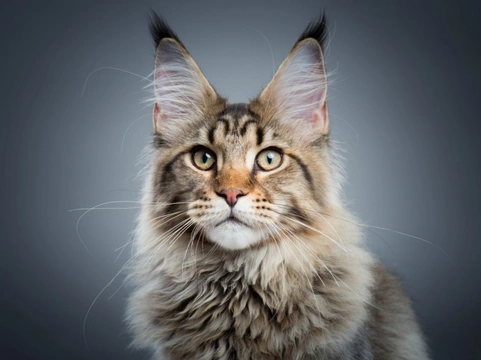
Hip Dysplasia in Cats
While hip dysplasia is most commonly associated with dogs and is certainly more common in dogs than it is in cats, nevertheless, our feline companions may also be affected by the condition, which can lead to pain, difficulty moving freely, and a progressive degeneration of the hip joints.
Hip dysplasia occurs when the ball and socket joint that make up the hips fail to develop normally, which is known as a malformation. This abnormal development means that the ball does not fit snugly into the socket of the joint, which is necessary for free movement, leading to dislocation, incorrect joint development, and progressive degeneration.
Read on to learn more about hip dysplasia in cats.
What causes hip dysplasia in cats?
Hip dysplasia is a genetically inherited condition, rather than one that is contracted or caught, but the eventual disorder comes about from a combination of the genetic predisposition to the condition in combination with environmental factors. Hip dysplasia involves multiple genes, so only when both parent cats possess the gene for the condition will their subsequent offspring inherit the condition, and this can occur even if both parents are symptom-free, and not suffering from the condition themselves.
Hip dysplasia in the cat is relatively rare over all, but is more prevalent within some breeds and types of cats than others.
Breeds and types of cat prone to hip dysplasia
Certain pedigree cat breeds including the Maine Coon and the Persian cat have particularly high risk factors for hip dysplasia, with around 18% of Maine Coon cats reported to develop the condition, and an exponentially higher number of cats of the breed carrying the gene for hip dysplasia.
The condition is more prevalent in heavy-boned, large cats, but even smaller cats can potentially be affected by this inherited condition as well. The condition as a whole is much more common in purebred cats than in moggies, and female cats are more likely to develop the condition than males.
The symptoms of feline hip dysplasia
First and foremost, it is important to look at your cat’s ancestry to try to identify if they might have an elevated risk rate for hip dysplasia, and be on the lookout for the condition if they share common ancestry with affected cats.
Physical symptoms of feline hip dysplasia include:
- Lameness of the hind legs, worsened by exercise
- A strange swaying or hopping gait from the back legs rather than the usual cat walking stride
- Painful hip joints
- Limited range of movement in the hips
- Muscle atrophy or poor muscle development in the hindquarters
- Overdeveloped shoulder muscles due to their increased workload in compensation
- Loose or “floating” hip joints
- Reluctance or difficulty in jumping or going up and down stairs
- Difficulty getting up after lying down
- Reluctance to run, or an unusual, shortened running gait
Diagnosing hip dysplasia
In order to get a definitive diagnosis of hip dysplasia in the cat, your vet will need to examine them thoroughly, by performing a physical and visual check of the cat’s limbs and other tests.
Blood tests, urinalysis, x-ray examination and other tests may also be required. Your vet will also ask you for all of the information you can find out about your cat’s genetic history, as this can help to provide a clearer picture of the condition and how it is likely to develop.
How is hip dysplasia in cats treated?
Hip dysplasia presentation can vary considerably from cat to cat, and how the condition is treated will depend on the way that the condition is affecting your cat, and what procedure will offer them the best chance of an improvement in quality of life.
In minor cases of hip dysplasia that are not expected to progress and that are not having a serious impact on your cat’s general wellbeing, treatment may involve physiotherapy, weight control, and other outpatient measures to strengthen the muscles around the hip joints and avoid placing any additional pressure on the joints.
For more serious or advanced cases, surgery may be required to correct the condition and restore your cat’s freedom of movement, and again, there are several different surgical approaches to dealing with the condition.
Managing hip dysplasia
One hip dysplasia has been diagnosed and a treatment protocol or surgical procedure has been decided upon, it is important to keep an eye on your cat’s hips and monitor them for any changes for the duration of their lives. Even surgical treatments are not wonder cures, and a cat with hip dysplasia that is surgically treated will generally show a huge improvement, but may never achieve the full freedom of movement associated with healthy hips.
Keeping your cat at a healthy weight is vital for the management of the condition, as is scheduling regular check-ups for your cat to ensure that everything is as it should be.
As hip dysplasia is genetically inherited, cats that carry the condition should not be bred from, as they will pass on the gene for the condition to their subsequent offspring.



